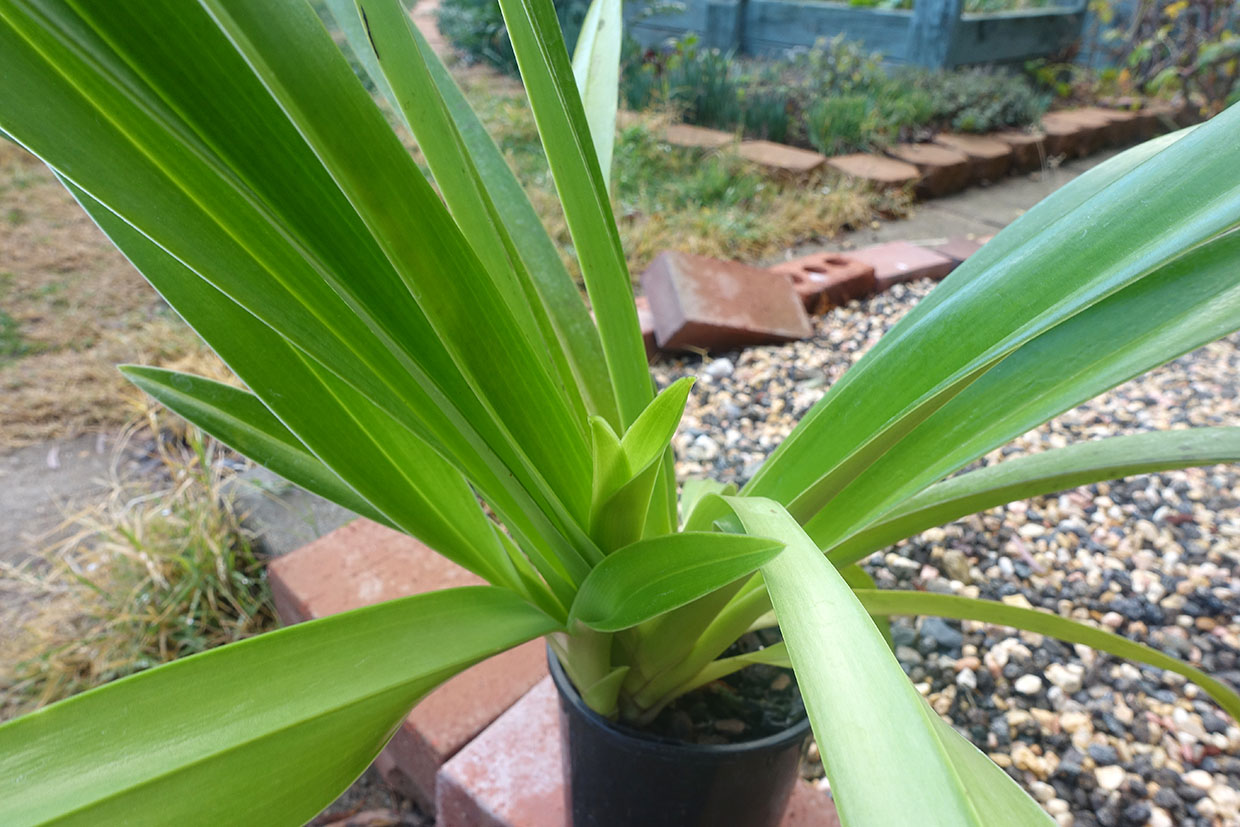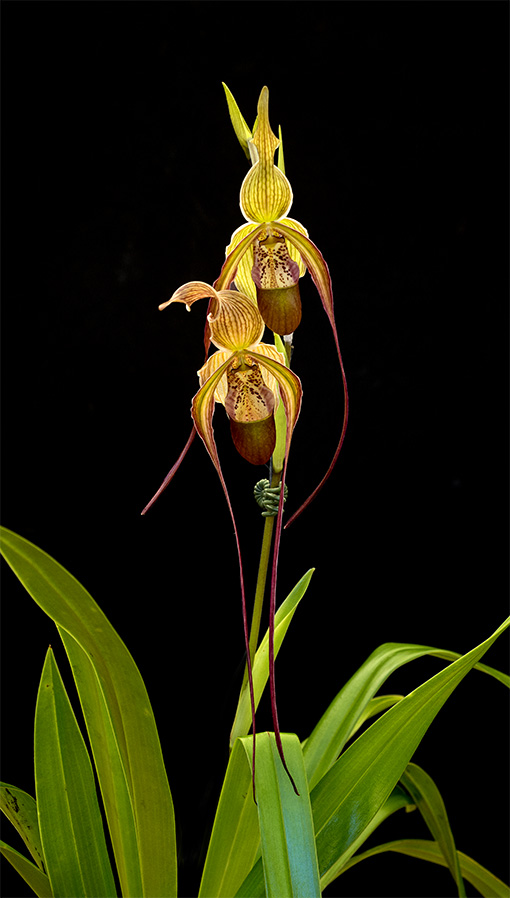I'm going to be "that guy", but if you can't provide the night-time lows that other people are mentioning in this thread, I wouldn't sweat it too much. My night temps (indoors) do not get that low, unless I really screw up and leave a window open on a very cold night which is a rarity and I have lots of good success with blooming all kinds of different Phrags (including Grande).
As for the watering, any cross that's 50% or more caudatum (or related species) should be treated with caution. Chances are good it's going to want to stay at least damp year round, and probably outright wet in late spring through fall. However, as already pointed out, there will be some variation in preferences, and by chance alone, you might get a clone that doesn't like and can't tolerate wet conditions.
Unless the leaves are very light in color or clearly sunburned, increasing the light levels would be the first thing I'd try. Even if it's just for part of the year, it'll increase your odds of getting the plant to bloom. For instance, setting it in a bright sunny spot outdoors in the summer would probably go a long way.
Another thing I've noticed, especially with Phrags, is that some clones seem to want to grow into nice, big clumps before they're willing to bloom. For instance, I had a P. pearcei, P. Grande, and others that no matter what I did to try and promote blooming, simply would not do so until they were very large multi-growth (8 - 10+ growth) plants. Once they reach that size, they would then go on to bloom regularly and profusely. I've had this happen with flasklings (or compotlings) where some or most of the plants would start to bloom young and early, but a few stubborn hold outs that would take years growing into a clump before they'd start blooming regularly.
That's not to say you should just wait another few years without trying other things. I know with my P. pearcei I scorched it with tons of light one year after waiting 5+ years for it to bloom, and that was the first year it started blooming. Interestingly enough, though, after that first year of blooming, it went back under the regular lights (T8/T12 fluoros at the time) in the same old light levels that it formerly refused to bloom under, and yet it's been a reliable and heavy bloomer (almost ever blooming) up until I repotted it earlier this year. So, maybe it takes a bit of a shock, change of conditions, or one season of lower temps/higher lights/ more water/whatever -- and then after that, things should work out.
















































